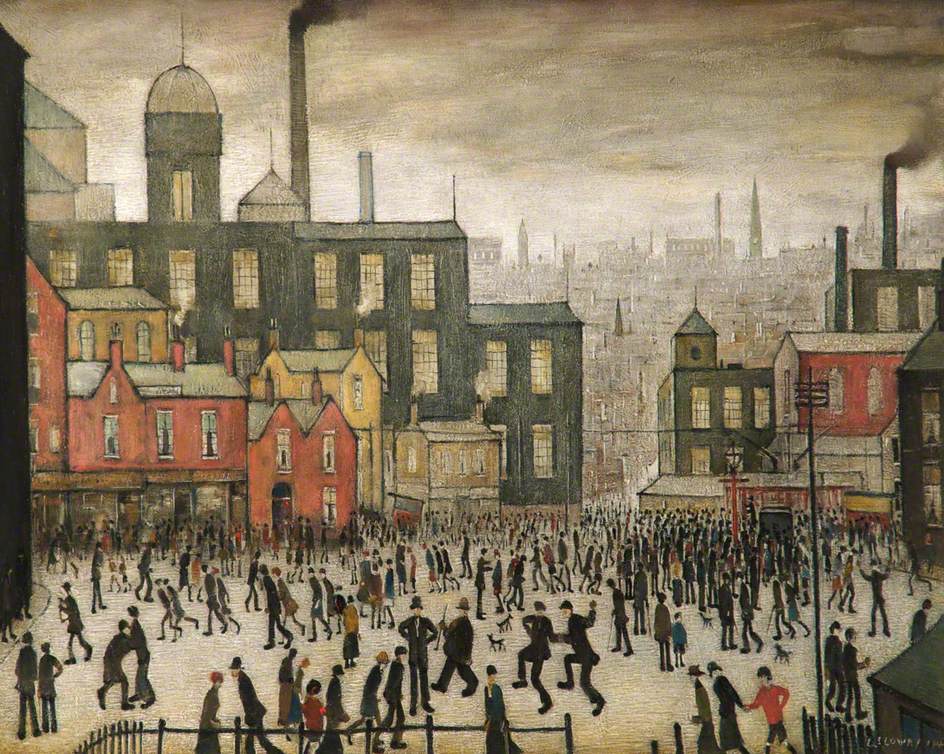PLAY IT ON PICASSO´S MANDOLIN
PLAY IT ON PICASSO´S MANDOLIN

Guy Clark´s Boats To Build album itself, when first released in 1982, caused me a great deal of confusion. I had always loved Guy´s songs of dust trails and freeways and of crazy characters and their complicated relationships but this album took me in directions I wasn´t then ready to take. I pompously wrote a somewhat stinging review in a major country music magazine and found myself taken to task on BBC Radio 2 by Wally Whyton on an edition of his weekly country music show.
That a former children´s entertainer had contradicted me whilst presenting a show on BBC Radio 2 that I enjoyed, but sniffily thought of as ´mainstream, ´ didn´t bother me too much, but what did bother me was that Wally was certainly no wally and actually knew his stuff and argued his case well. I had no choice but to open my mind and listen to the album again. A couple of weeks later I wrote a grovelling apology and retraction of my previous comments and now, some thirty years later, Boats To Build is among my ten favourite albums ever.
Picasso´s Mandolin is a track that at first sounds to be a celebration of the musician, then seems to be an homage to the Spanish artist but is perhaps better interpreted of a declaration of an attitude to life. Like many of Guy´s songs it is an extension of an aphorism, one that in this case tells us that ´you´ve got to play it just the way that it feels.´ We wrote recently on these pages of some young musician-students we saw who were taking a year end exam, by taking part in a first public performance, accompanied by their musical teacher / mentor. One of the most impressive features of that concert was that the four players all individually played it the way it felt rather than slavishly following what they had been taught. In other words they surrendered to the music.
I realise now that Guy Clark was also reminding us that it was with a similar attitude to his own art form that Picasso painted. Like the best music, his paintings seemed improvised, or at least off the cuff.
Yet I was reminded by a recent review in the Financial Times Arts & Life pages that actually Picasso´s work was always far more prepared than improvised. The review was of an exhibition called Picasso And Paper, currently showing at the Royal Academy and was a really good read.
Writer Jackie Wullschlager describes Picasso as ´the most inventive, original, protean artist of the 20th century´, and says the exhibition is ´an enthralling shadow retrospective.´
I saw a similar collection myself when I visited the Madrid gallery to view ´Guernica´ in all its horror. The painting was complemented, if that is the right word by Picasso´s dramatic drawings and gouaches of the wounded, wretched horse at its centrepiece, that were the artist´s blueprint for his work. Picasso And Paper similarly employs such drafts and diagrams relating to all the artist´s major works
Wullschlager says of “Femmes à leur toilette”, that it is a collage of bright wallpaper samples reworked into a grotesque interior with repeated contorted figures of Dora Maar, in a bizarrely ornamental, mixed-media take on the “Weeping Woman” paintings.´
Seeing these developments on paper, that subsequently realised masterpieces of art, is a bit like listening to an expert record producer revealing the layers of music that make up classic pop albums like Sergeant Pepper´s Lonely Hearts Club Band or Graceland. These papers seem to offer us a deconstruction of Picasso´s greatest hits.
In some ways the collection offers us a glimpse of the ephemeral, free spirit that Guy Clark seems to suggest when he sings of emulating Picasso by deciding ´I´m gonna mix my paint with verve.´ in the same way as I can listen to a lyric or read a poem and argue many different ´meanings´ so Wullschlager admits that he could ´spend a day engrossed in such formal yet psychological battles´ over Picasso´s work. He tells us of ´strong fluid lines manipulated into casual, expressive brilliance.´
He contrasts that notion of the ´pencil barely seeming to rise from the paper´ with a ´hard, symmetrical rendering´ via, “Olga In A Hat With Feather”, of Picasso´s wife that he says ´balances virtuosity and dislike.´
This exhibition has all been curated unobtrusively by Ann Dumas and William Robinson that tells not only the story of Picasso, but also of the twentieth century of which the artists was not a only a mover and shaker but also its mirror, and perhaps even its conscience..
These papers do not only reveal Picasso in his search for dimension and scale but also his exploration of his own attitudes and those of others.
Picasso constantly reinvented pieces of his work, re-contextualised them and placed them in dialogue with other art forms particularly music, through works such as Man With A Guitar and of the mandolin that is the subject of Guy Clark´s song. In Picasso And Paper you can see those works from conception to realisation and yet, perhaps, if Picasso were still alive he would be reinventing them all over again. This exhibition reveals both his diligence and impatience as he constantly seeks to explore and explain. We are compelled, as we view what the artist reveals and, too, what he conceals.
Indeed, Wullschlager cautions us that ´the line between beauty and monstrosity, distortion and the illusion of a pictorial world, lies at the heart of Picasso.´
Guy Clark´s song casts Picasso as carefree and heroic in his style. That is as maybe but Picasso was much beyond being simply improvisational.
This collection reminds us that he was constantly questioning what he saw and how he represented it. Not only that but he identified process and completed statement in way that allowed him to articulate ´the muse´ more clearly perhaps than any other artist.
Wullschlager suggests this collection introduces us (again?) to ´a Picasso for now.´
The artist´s early biographer, Roland Penrose, wrote that ´Picasso draws as he thinks and as he lives. The whole drama of love, life and the inevitability of death are present.´

Piccaso
And yet it is over a hundred years since Picasso painted the mandolin that Texan songwriter Guy Clark celebrated in song. It was in 1910 that Picasso spent a summer holiday in Cadaqwuyes where he originated Girl With Mandolin. By now he was heavily involved with the Anlalytical Cubism that had evolved from his Cubist period and only the mandolin itself could be said to clearly identifiable in the piece. Indeed it is perhaps only the title that even clarifies an issue of gender but that doesn´t leave it devoid of realism in its strange portrayal of both motion and emotion.
Guy Clark suggested in his lyric that Picasso believed ´there ain´t no rule if you don´t break it.´ Whether that means that Picasso And Paper proves him to be a free spirit, willing to experiment in every which way or instead shows him to be painter determined to circumnavigate a subject in all directions to ensure that he show it at its correct best is irrelevant. That decision is for the viewer to make. Picasso, according to Guy Clark was, though, a fearless artist, ´who lived in Spain and worked in France and was not afraid to wear baggy pants!´
Seeming to almost preview Picasso And Paper over the past couple of years has been Degas: A Passion For Perfection. The title alone tells us that there must be much to compare and contrast when considering the attitudes these painters brought to their work.

Degas once said ´it is essential to do the same subject over again, ten times, one hundred times´ which is advice that surely Picasso was following in creating his drafts, sketches and plans.
Degas died in September 1917, in his eighty-third year, after a career spanning over half a century, This exhibition was a celebration of his lifetime’s achievement and showed a remarkable range of work that included paintings, pastels, and prints of different types as well as drawings, watercolours, prints of different types, counterproofs and sculptures in bronze and wax.
All this reveals the artist´s fascination with technical experimentation and constant drive to expand his means of expression. Arranged thematically, the exhibition highlights many of the subjects most prominent in Degas’s work – nudes, café scenes and the dance – as well as his individual approach to landscape painting. Degas’s lifelong passion for learning from others is revealed in a series of copies he made after works by Italian Renaissance artists and near-contemporaries such as J.A.D. Ingres and Eugène Delacroix.
As an interesting comment on the evolution of the arts, though, the exhibition included a final section examining Degas’s artistic legacy in the 20th and 21st centuries, notably in the work of Walter Sickert, Pablo Picasso, Lucian Freud, Frank Auerbach, R.B. Kitaj, Ryan Gander and Francis Bacon.
The exhibition drew substantially on the collections of the Fitzwilliam Museum, the most extensive and representative in the UK. These were complemented by an outstanding group of around sixty loans from private and public collections throughout Europe and the United States, several of which will be on public display for the first time, and by a group of paintings and drawings once belonging to the economist John Maynard Keynes.
I once delivered a series of creative writing workshops using the works of Degas to inspire primary school classes to write expansively on what they saw in his paintings. One young lad, who will surely grow up to an art critic suggested that on the artist´s Beach Scene smoke from the funnels on a distant ship was apparently ´blowing the wrong direction !´ I like a viewer prepared to have an argument, even if wrong, so I gave him a house-point, though I´m still not certain he was right.

as played by Vanessa Redgrave and Timothy Spall
Another artist I constantly referred to in such classes was the world famous L S Lowry, although the late painter also remains firmly a working class hero for the North West of England. The theatre and arts centre named after him in Salford
(https://thelowry.com/whats-on/ls-lowry-the-art-the-artist/)
houses a permanent exhibition selected from the world’s largest public collection of Lowry´s paintings and drawings these are displayed alongside other works on loan from private collections across the UK. Free 20 minute tours are given of the LS Lowry exhibition every day at 12pm and 2pm, and taking a primary class around and asking them to speak ´ínstant rhymes´ about his matchstick figures was always great fun. How many of those young children we showed round more than thirty years ago might now go as adults to the cinema to see Mrs. Lowry And Son. the 2019 film starring Timothy Spall? And how many of them might then return to the Lowry Theatre and Exhibition Centre to see the actor´s version of Lowry work as created for that film?

Meanwhile, we are currently in the 175th year since the formation of The Rochdale Society of Equitable Pioneers, forerunners of The Co-operative Group. To mark this special year Touchstones Arts And Heritage Centre, which stands only a hundred yards from Toad Lane where that gathering first met, are delighted to put on a special display of three L.S. Lowry works. Two of these are owned by The Co-op – ‘Footbridge’ and ‘Cleator Moor’, alongside ‘Our Town’, a much loved painting within the borough’s own fine art collection.
During their stay in Rochdale, the works will also be taken out on ‘day trips’ to local schools and community venues. They will be on display until September.




Leave a Reply
Want to join the discussion?Feel free to contribute!